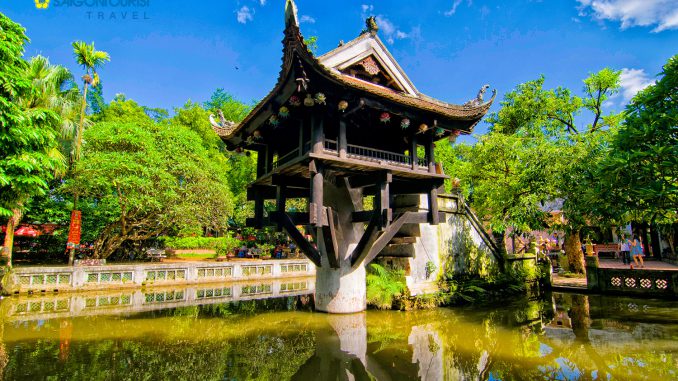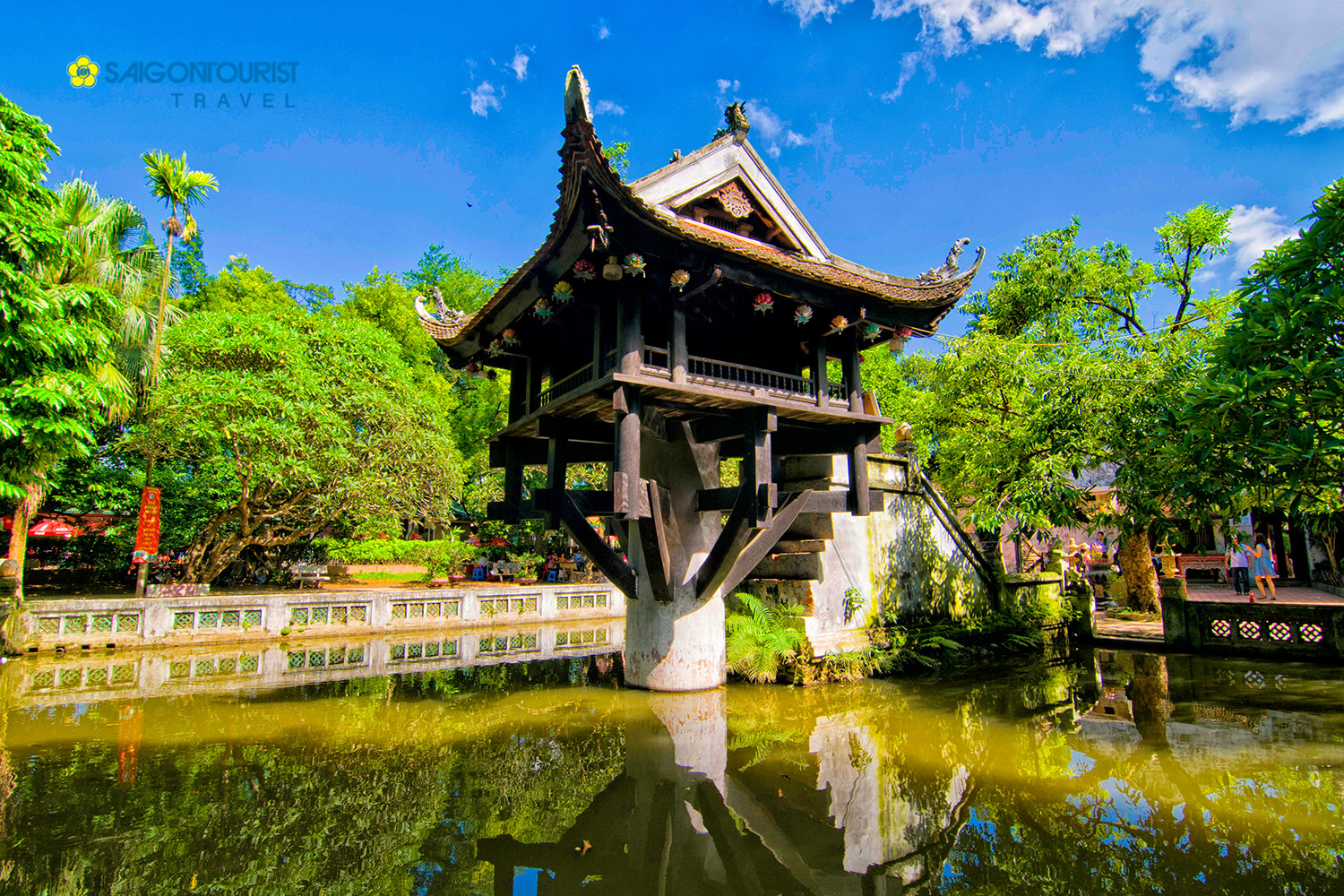

Location
The unique pagoda is located in the western part of the city, near Ho Chi Minh’s Mausoleum, Ong Ich Khiem St., Ngoc Ha, Ba Dinh District, Hanoi.
Characteristics
The One Pillar Pagoda (Vietnamese: Chùa Một Cột, formally Diên Hựu Tự, which litterally means “long lasting happiness and good luck”) is a historic Buddhist temple in Hanoi, the capital of Vietnam. As you visit Hanoi, you may come to various other monuments, parks and historical places. Yet, the One-Pillar Pagoda reflects the architectural splendour that the country has grown.
According to legend, ageing Emperor Ly Thai To of the Ly dynasty, who had no children, used to go to pagodas to pray to Buddha for a son. One night, he dreamt that he was granted a private audience to the Bodhisattva Avalokiteshvara, who was seated on a great lotus flower in a square-shaped lotus pond on the western side of Thang Long Citadel, gave the King a baby boy. Months later, when the Queen gave birth to a male child, the Emperor ordered the construction of a pagoda supported by only one pillar to resemble the lotus seat of his dream in the honour of the Bodhisattva Avalokiteshvara. According to a theory, the pagoda was built in a style of a lotus emerging out of the water.
Emperor Ly Thai Tong had this temple constructed in gratitude for the mentioned significant legendary event in 1049, by erecting a pillar in the middle of a lotus pond, and a temple of lotus-shape, exactly similar to what he saw in the dream. This unique shape of the pagoda together with the special story has been of great absorption to hundreds of thousands of international tourists!
As time went by, the pagoda succumbed to many ravages caused by the colonial powers. In 1954, the French Union forces destroyed the pagoda before withdrawing from Vietnam after the First Indochina War, and it was rebuilt afterwards.
The pagoda is open daily from 08:00 a.m to 05:00 p.m. Entrance is free.
Note: Visitors must wear full-length clothes when visiting the One-Pillar Pagoda as well as other pagodas in the Vietnam.